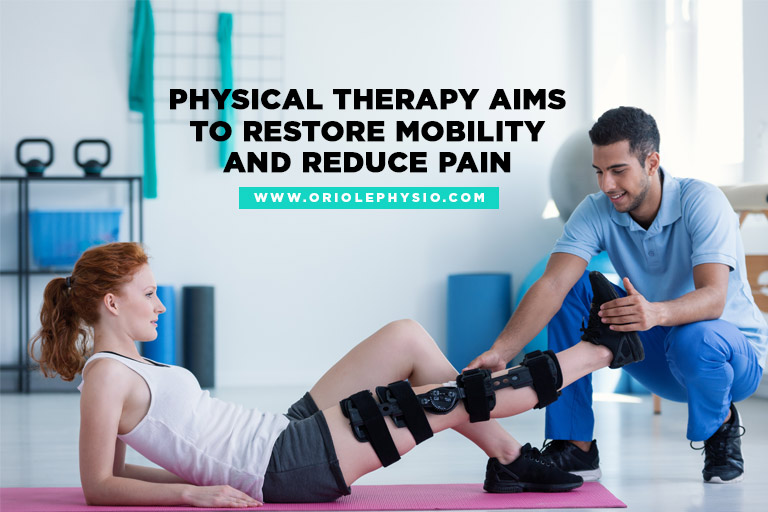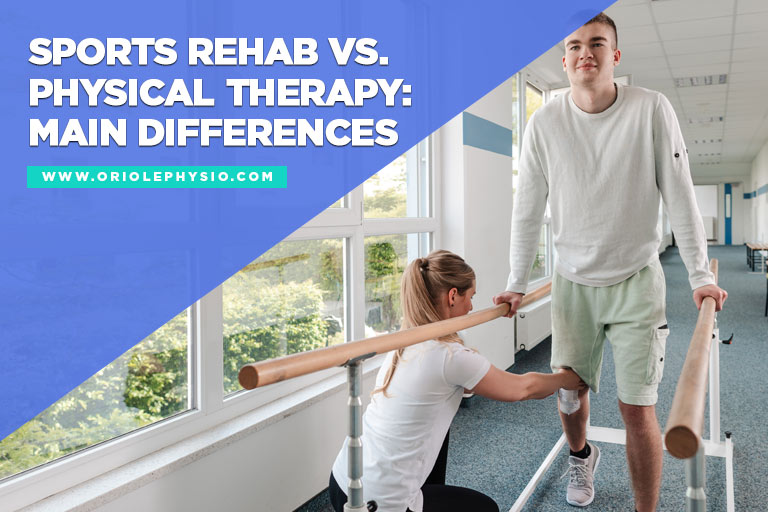Sports Rehab vs. Physical Therapy: Main Differences
Injuries are inevitable in any sport or physical activity and can significantly impact your performance and quality of life. A sports rehabilitation and physical therapy program can help you recover strength and mobility following an injury, illness, or surgery brought about by physical activities.
But which is right for you? While both sports rehabilitation and physical therapy aim to restore functionality and reduce pain, the approaches, goals, and patients they cater to differ. Understanding the differences between these two modalities can help you make informed decisions about your health care, whether you’re a professional athlete or someone who wants to improve their physical function.
This article will explore their primary differences in detail to help you better understand which best suits your needs.
What Is a Sports Therapist?

Sports medicine doctors specialize in preventing, assessing, and treating sports and physical activity injuries.
The responsibilities of sports medicine experts include the following:
- Injury assessment – Sports therapists assess their patients’ injuries and diagnose their severity. They use various techniques, such as palpation and range of motion tests, to determine the extent of the injury.
- Treatment planning – Sports therapists develop treatment plans based on the individual’s needs after assessing the injury. This may include exercises to improve strength and flexibility, manual therapies such as massage and stretching, and ultrasound or electrical stimulation modalities.
- Rehabilitation – Sports therapists work with their clients to help them recover from injuries and regain strength, flexibility, and range of motion. They may use various techniques to help their clients recover, including exercises, stretches, and manual therapies.
- Injury prevention – Sports therapists work with athletes and physically active individuals to prevent injuries. This may include educating them on proper form and technique, developing conditioning programs, and recommending protective equipment.
- Performance enhancement – Sports therapists also work with athletes to improve their performance. This may involve developing strength and conditioning programs and providing proper nutrition and hydration education.
What Is a Physical Therapist?

On the other hand, a physical therapist, also known as a physiotherapist, is a healthcare professional specializing in assessing, diagnosing, and treating movement disorders and injuries.
Physical therapists have the following responsibilities:
- Evaluation and assessment – Physical therapists assess their clients’ physical abilities and limitations.
- Treatment planning – Based on their evaluation, physical therapists develop a treatment plan tailored to the individual’s needs.
- Rehabilitation – Physical therapists help clients recover from injuries or surgeries and regain strength, flexibility, and range of motion. They may also help clients manage chronic conditions such as arthritis or back pain.
- Injury prevention – Physical therapists may recommend exercises to improve strength and flexibility, advice on proper form and technique, and protective equipment recommendations to help their patients prevent injuries.
- Patient education – Physical therapists educate patients on managing their condition and preventing the occurrence of future problems. Additionally, they may provide advice on healthy lifestyle choices, such as nutrition and exercise.
How Do Sports Rehab and Physical Therapy Differ?
Here are the main differences between sports rehab and physical therapy:
- Focus
Sports rehab mainly focuses on athletes and their injuries. It is a specialized form of rehabilitation that targets specific injuries common in sports, such as ACL tears, rotator cuff injuries, and ankle sprains. Sports medicine programs are designed to help patients improve their physical performance and enhance their athletic abilities. Treatment plans typically include targeted exercises and specialized techniques to improve balance, strength, flexibility, and endurance.
Physical therapy is a more general type of rehabilitation that can help anyone who has suffered an injury or has a medical condition that affects their movement. A physical therapist is trained in treating a variety of conditions, from chronic pain to post-operative recovery. Treatment plans are designed to help patients reclaim independence and improve their quality of life by addressing the underlying causes of pain or dysfunction.
- Timing
Sports therapy typically starts after an injury or physical limitation that hinders sports or physical activities. The start time of sports therapy depends on the injury’s severity, overall health, and fitness level and may begin immediately or after a period of rest or other treatments.
Physical therapy can start at any time, before or after surgery. It’s often the first-line treatment for chronic conditions, including arthritis or back pain, and can be a preventative measure to avoid injury or surgery. Additionally, physical therapy can continue after surgery or sports rehab to help patients maintain their progress and prevent future injuries.
- Setting
When recovering from a sports injury, it’s essential to receive specialized care from a trusted sports specialist rehab centre. Sports rehab is typically provided in a specialized clinic, such as a sports rehab clinic or gym, where athletes can work with sports rehab therapists in a one-on-one or small group setting. This personalized approach allows for more targeted treatment plans tailored to the athlete’s needs and recovery goals.
Physical therapy can be conducted in various settings, including hospitals, outpatient clinics, and even patients’ homes, to ensure patients receive the care they need in a comfortable and convenient environment.
- Techniques
Sports rehab techniques are designed specifically for athletes and active individuals. For example, a basketball player may work on jumping and landing mechanics, while a runner may focus on gait retraining. Sports rehab therapists may also use techniques such as plyometrics, agility drills, and sport-specific conditioning to help athletes return to their pre-injury performance. Sports rehab may also include massage, stretching, and joint mobilization.
Physical therapy techniques are more diverse and may include manual therapy, massage, and exercise. Treatment plans are tailored to the patient’s needs and may include exercises to improve strength, flexibility, and balance. In addition, physical therapy may focus more on functional activities of daily living, such as walking, climbing stairs, and lifting objects. Physical therapists may also use adaptive equipment, such as crutches or braces, to help patients improve their mobility and independence.
- Patient Population
Sports rehab typically caters to athletes and individuals participating in sports or physical activities. This includes amateur and professional athletes and individuals who engage in regular physical activity for recreation or fitness.
Physical therapy works with patients of all ages, including those with acute injuries, chronic conditions, or disabilities. For example, physical therapists may work with patients recovering from surgery, stroke, or neurological disorders and those with arthritis or back pain.
What’s Right for Me: Sports Rehab or Physical Therapy?
There are many factors to consider when choosing between physical therapy and sports rehab, including your injury type, severity, health level, recovery goals, and lifestyle.
Sports rehab may be the most suitable option for you if you’re an athlete or participate in sports regularly.
On the other hand, physical therapy is a better choice if your injury or physical limitation is not related to sports or exercise or if you have underlying health conditions that may affect your recovery.
To determine which option suits you, consult a qualified healthcare provider or sports therapist who can evaluate your specific needs and recommend the most appropriate treatment plan.
If you want the best care and guidance to improve your overall wellness, turn to Oriole Physiotherapy & Rehabilitation Centre. Our experienced team of healthcare providers can help you determine whether sports rehab or physical therapy is the right choice for your needs.
If you have questions about sports rehab in North York or need help deciding on the right course of treatment, don’t hesitate to reach out to us. Give us a call at (416) 221-0772.



